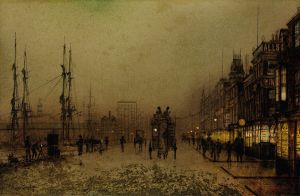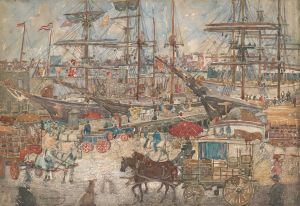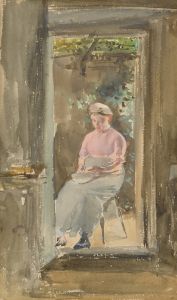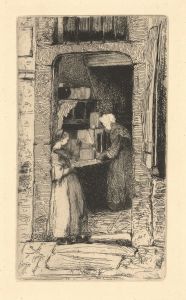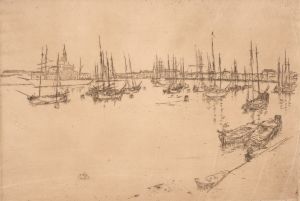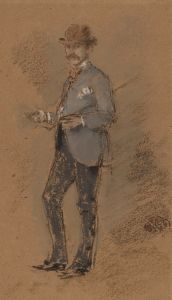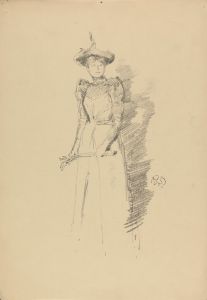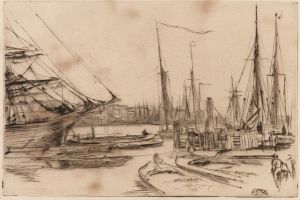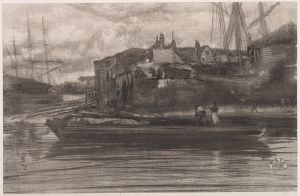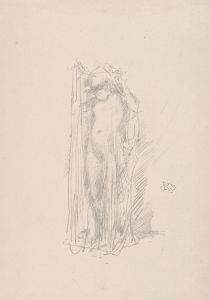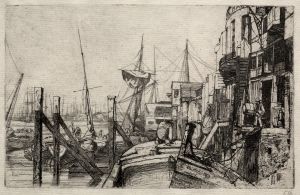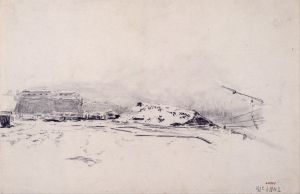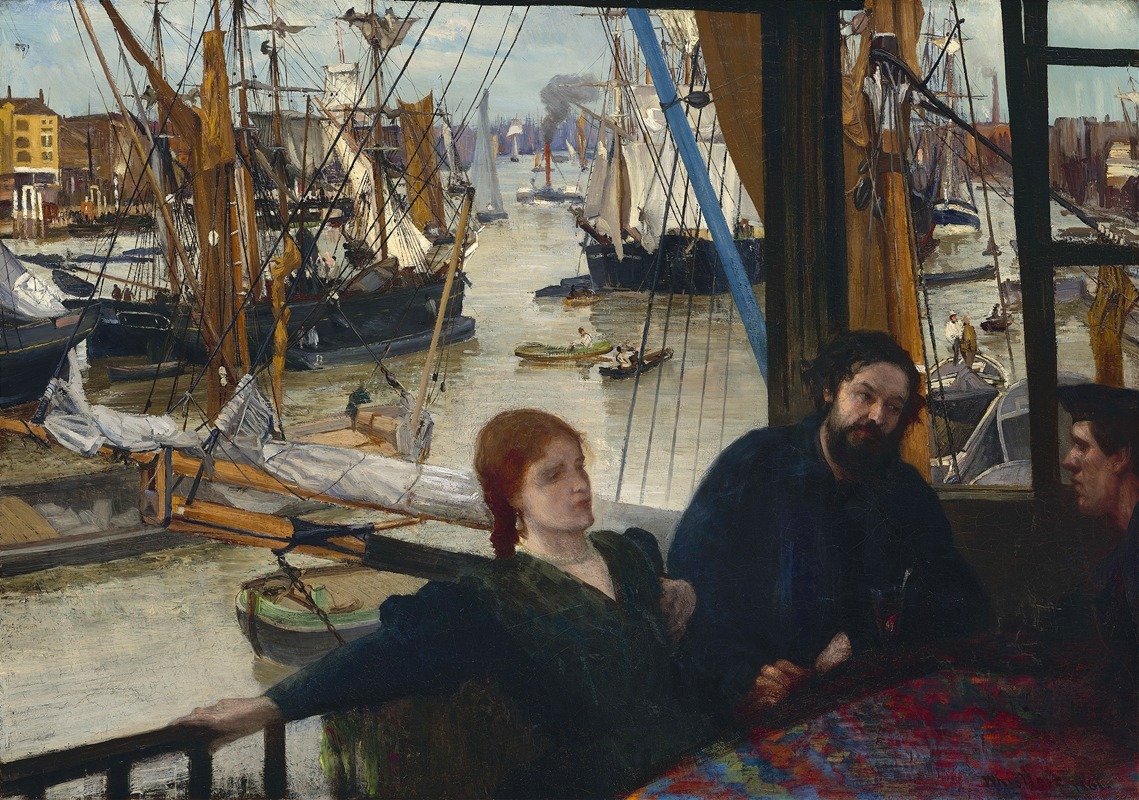
Wapping
A hand-painted replica of James Abbott McNeill Whistler’s masterpiece Wapping, meticulously crafted by professional artists to capture the true essence of the original. Each piece is created with museum-quality canvas and rare mineral pigments, carefully painted by experienced artists with delicate brushstrokes and rich, layered colors to perfectly recreate the texture of the original artwork. Unlike machine-printed reproductions, this hand-painted version brings the painting to life, infused with the artist’s emotions and skill in every stroke. Whether for personal collection or home decoration, it instantly elevates the artistic atmosphere of any space.
"Wapping" is an oil painting created by the American-born artist James Abbott McNeill Whistler between 1860 and 1864. The painting is named after the Wapping district in East London, which is situated along the River Thames. This work is notable for its depiction of the everyday life and the bustling activity along the riverbank, capturing a slice of 19th-century London.
Whistler, who was known for his innovative approach to art and his influence on the Aesthetic Movement, painted "Wapping" during a period when he was deeply engaged with the realist tradition. The painting measures approximately 72.4 cm by 101.6 cm (28.5 inches by 40 inches) and is currently housed in the National Gallery of Art in Washington, D.C.
The scene in "Wapping" is set on a balcony overlooking the Thames, with a view of the river and the industrial landscape beyond. The composition features three figures: a sailor, a woman, and a man in a top hat. The sailor is seated, gazing out at the river, while the woman, dressed in a blue dress, stands beside him, leaning on the railing. The man in the top hat, who is believed to be a portrait of Whistler's friend and fellow artist Walter Greaves, stands slightly apart, also looking out over the water.
Whistler's use of color and light in "Wapping" is particularly striking. The painting is dominated by a palette of blues, greens, and browns, which effectively convey the atmosphere of the riverside setting. The light in the painting is soft and diffused, suggesting an overcast day, which adds to the sense of realism and the mood of the scene.
The detailed rendering of the figures and the background demonstrates Whistler's skill as a draftsman and his keen observation of the world around him. The inclusion of the industrial elements, such as the ships and the warehouses, reflects the economic activity of the area and provides a historical context for the painting.
"Wapping" is also significant for its composition and the way Whistler has arranged the figures within the space. The use of perspective draws the viewer's eye into the painting, creating a sense of depth and inviting them to explore the scene. The positioning of the figures, with their varied postures and expressions, adds a narrative element to the work, suggesting a moment of contemplation or conversation.
This painting is an excellent example of Whistler's ability to blend realism with a more poetic and atmospheric approach to his subjects. It also highlights his interest in capturing the character and essence of specific locations, a theme that would continue to be important throughout his career.
Overall, "Wapping" is a masterful work that showcases James Abbott McNeill Whistler's talent and his unique vision as an artist. It remains an important piece in the study of 19th-century art and provides valuable insight into the social and industrial landscape of London during that period.






